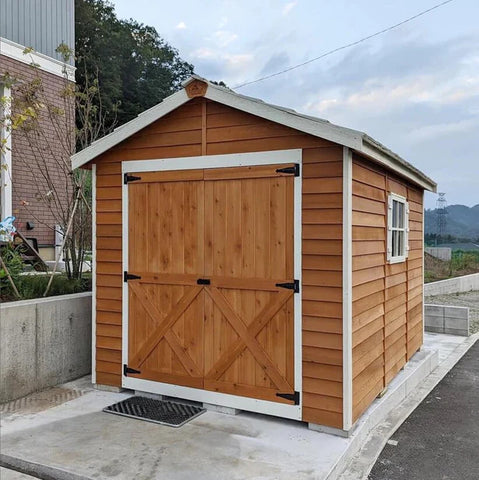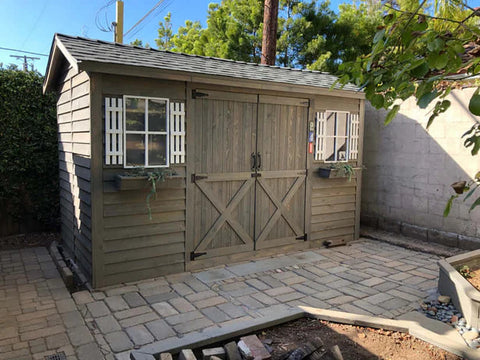1-800-540-9051
Info@HomesteadSupplier.com
Mon-Fri 7am-3pm Pacific Time
1-800-540-9051
Info@HomesteadSupplier.com
Mon-Fri 7am-3pm Pacific Time

Building a shed can bring a myriad of benefits, but it's crucial to know how far from the property line you can place it to comply with local zoning laws. So, how far from property line can I build a shed?
Typically, sheds should be situated at least 3 to 5 feet away from your property boundaries to ensure proper access and adherence to safety regulations.
In this article, we'll delve deeper into the specific regulations that may affect your project, such as local zoning laws, and discuss several other factors you should consider to ensure your new shed is both functional and legally compliant.
By the end, you'll have a clear understanding of the necessary steps to take before beginning your build.
What this article covers:From our extensive experience at Homestead Supplier, the distance your shed must maintain from the property line can vary significantly depending on your local zoning laws.
Generally, we've found that most zoning laws require sheds to be placed at least 3 to 5 feet away from the property line. This spacing is crucial for several reasons, such as ensuring access for maintenance and adhering to fire safety codes.
Before you start building, our top advice—gained from putting it to the test in various localities—is to always check with your local building authority to get the specific requirements for your area.
Doing so will also help you better understand things like building permits and size restrictions so that you can better plan your supplies to build a shed.
When planning where to place your shed, several key factors must be considered to ensure your project proceeds without any hitches. Here's what you need to keep in mind:
Think about the daily functionality of your shed. It's essential to ensure that there is sufficient room around your shed not only for ease of access but also for necessary maintenance activities like mowing, cleaning, or even painting.
If you're wondering how long do sheds last, this space is crucial for practical use and for the longevity of the shed. Consider the direction in which the shed's doors open—ensure they do not swing towards the fence, which could restrict access or damage both structures.
The spacing between your shed and any boundary, like a fence, isn't just a matter of preference—it's about preserving the integrity of the shed too. Proper spacing prevents moisture problems that are common in cramped spaces.

Moisture trapped in tight spaces can lead to mold and mildew, which might damage both your shed and the items inside. We recommend leaving at least 2 to 3 feet of clearance around your shed. This space allows for adequate airflow and keeps your structure dry and ventilated.
While installing a shed, it's crucial to consider its impact on your neighbors. A shed that encroaches too close to a property line can lead to disputes or strained relations.
To maintain good relationships with your neighbors, position your shed at a respectful distance from the property line. This approach not only respects their space but also minimizes any concerns about privacy or property infringement.
If you're part of a Homeowners Association, it's vital to check any pertinent restrictions regarding shed placement and construction.
HOAs often have specific guidelines about how close structures can be to property lines, as well as rules regarding the height and size of outdoor structures. Your shed value can also increase the value of your property, but only if it's in line with building regulations and HOA restrictions.
By consulting your HOA's regulations before beginning construction, you can avoid potential legal issues and the hassle of having to modify or relocate your shed after it's built.
Building a shed near your property line involves careful consideration of local zoning laws, accessibility, air circulation, neighbor relations, and HOA restrictions.
Adhering to these guidelines ensures that your shed is not only functional but also maintains good standing with your neighbors and local regulations.

Remember, the placement of your shed can impact its usability and longevity, so taking these factors into account is crucial for a successful installation.
If you're ready to find the perfect shed that meets all your needs and complies with local laws, explore our range of shed kits at Homestead Supplier. We're here to help you design and equip your ideal outdoor space.
If you want to learn more, why not check out these articles below:
Compare products
{"one"=>"Select 2 or 3 items to compare", "other"=>"{{ count }} of 3 items selected"}
Leave a comment